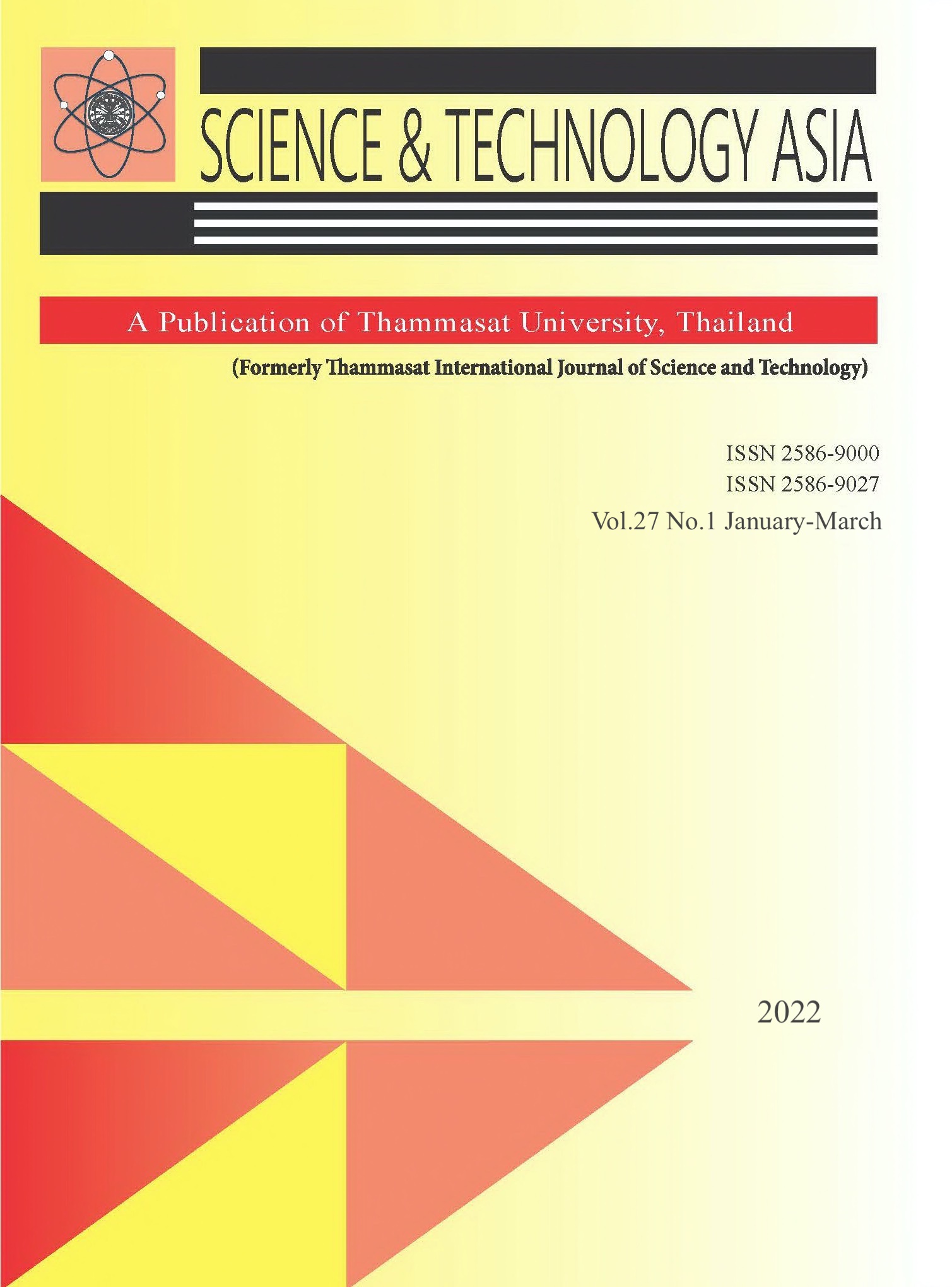Morphological and Molecular Identification of Pythium spp. from Hydroponically-Grown Lettuce
Main Article Content
Abstract
Herein, hydroponic Pythium communities in Thailand were investigated. The 38 Pythium isolates from asymptomatic and symptomatic lettuce roots were identified using morphological and molecular features. The data indicated that P. aphanidermatum and P. myriotylum were the predominant species. Regarding the rDNA-ITS study, all isolates were identified as P. aphanidermatum, P. myriotylum, P. deliense, or an unidentified Pythium species. The reconfirmation of the three unidentified Pythium isolates using the cytochrome oxidase subunit I (COI) gene in comparison to the representative isolates was achieved using P. aphanidermatum and P. myriotylum. The COI phylogenetic trees were similar to that of the ITS tree. Addi-tionally, pathogenicity of the Pythium representative isolates to plant seeds was evaluated in a laboratory assay. The seedlings suffered serious symptoms from P. myriotylum SR31 infection, with 90-100% disease severity. The other isolates presented disease severity of less than 20% when compared with uninoculated control. This study provides a comprehensive identification of Pythium root rot in lettuce grown on hydroponics in Thailand and provides information on beneficial microorganisms and a resistance inducer in lettuce root rot.
Article Details

This work is licensed under a Creative Commons Attribution-NonCommercial-NoDerivatives 4.0 International License.


